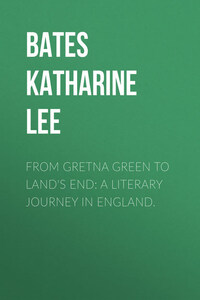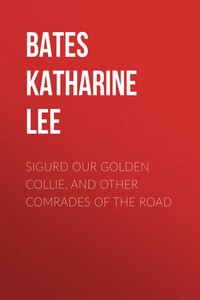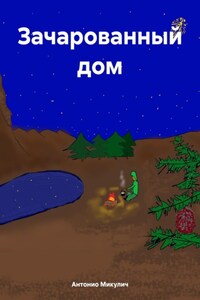The dominant interest of the northwestern counties is, of course, the Lake District, with its far-famed poetic associations; yet for the student of English history and the lover of Border minstrelsy the upper strip of Cumberland has a strong attraction of its own.
An afternoon run on the Midland brought us from Liverpool to Carlisle. Such are the eccentricities of the English railway system that the "through carriage" into which guard and porter dumped us at Liverpool, a third-class carriage already crowded with one sleeping and one eating family, turned out not to be a through carriage at all; and a new guard, at Hellifield, tore us and our belongings forth and thrust us into an empty first-class, lingering in the doorway until we had produced the inevitable shilling. But the freedom of an empty carriage would have been well worth the honest price of first-class tickets, for as the train sped on from the Ribble into the Eden Valley, with the blue heights of the Pennine range and the long reaches of the Yorkshire moors on our right, and on our left the cloud-caressed summits of Lakeland, we needed all the space there was for our exultant ohs and ahs, not to mention our continual rushing from window to window for the swiftly vanishing views of grey castle and ruined abbey, peel tower and stone sheep-fold, grange and hamlet, and the exquisite, ever-changing panorama of the mist.
Carlisle, "the Border City," a clean, self-respecting, serious town, without beggars, with no superfluous street courtesies, but with effectual aid in need, is the heart of one of the most storied regions of England. The River Drift man and the Cave man seem to have fought the mammoth and the elk and gone their shadowy way untraced in this locality, but the museum in Tullie House contains hammers and axes, found in Cumberland soil, of the Stone Age, and spear-heads and arrow-heads, urns for human ashes, incense cups, food vessels and drinking vessels of the Bronze Age, – mute memorials of life that once was lived so eagerly beneath these same soft, brooding skies.
As for the Romans, they seem here like a race of yesterday. A penny tram took us, in the clear, quiet light of what at home would be the middle of the evening, out to Stanwix, originally, it is believed, an important station in the series of fortresses that guarded the northern boundary of Roman Britain. These frontier lines consisted of a great stone wall, eight feet thick and eighteen feet high, ditched and set with forts and towers, running straight from the Solway to the Tyne, a distance of some seventy-three miles, and a little to the south of this, what is known as the vallum, a fosse with mounds of soil and rock on either side. The local antiquaries, urged on by a committee of Oxford men, have recently discovered a third wall, built of sods, between the two, and excavation and discussion have received a fresh impetus. Was the vallum built by Agricola, – earthworks thrown up by that adventurous general of the first Christian century to secure his conquest? Was the turf wall the erection of the great emperor Hadrian, who visited Britain in the year 120, and was the huge stone rampart constructed, early in the third century, by the Emperor Severus? Or does the stone wall date from Hadrian? Or did he build all three?
While the scholars literally dig for truth, we may sit on the site of this mighty, well-nigh perished bulwark at Stanwix, with what is perhaps the wrinkle left on the landscape by the wall's deep moat dropping, under a screen of hawthorns and wind-silvered poplars, sheer at our feet, and thence we may look out across the Eden, with its dipping gulls and sailing swans, its hurrying swifts and little dancing eddy, to the heights of Carlisle. For the city is built on a natural eminence almost encircled by the Eden and its tributaries, the Petteril and the Caldew. It is a fine view even now, with the level light centred on the red sandstone walls of the grim castle, though factory chimneys push into the upper air, overtopping both the castle and its grave neighbour, the cathedral; but for mass and dignity, for significance, these two are unapproachable: these are Carlisle.
We must not see them yet. We must see a lonely bluff set over with the round clay huts of the Britons, and then, as the Roman legions sweep these like so many mole-hills from their path, we must see in gradual growth a Roman town, – not luxurious, with the tessellated marble pavements and elaborate baths that have left their splendid fragments farther south, but a busy trading-point serving the needs of that frontier line of garrisons which numbered no less than fifteen thousand men. Some few inscribed and sculptured stones, remnants of altars, tombs, and the like, may be seen in the museum, with lamps, dishes, and other specimens of such coarse and simple pottery as was in daily use by common Roman folk when the days and the nights were theirs.
The name Carlisle – and it is said to be the only city of England which bears a purely British name – was originally Caer Lywelydd, British enough in very sooth. This the Romans altered to Lugubalia, and when, in 409, the garrisons of the Wall were recalled for the protection of Rome herself, the Britons of the neighbourhood made it their centre, and it passed into Arthurian tradition as Cardueil. Even the ballads vaguely sing of a time when









